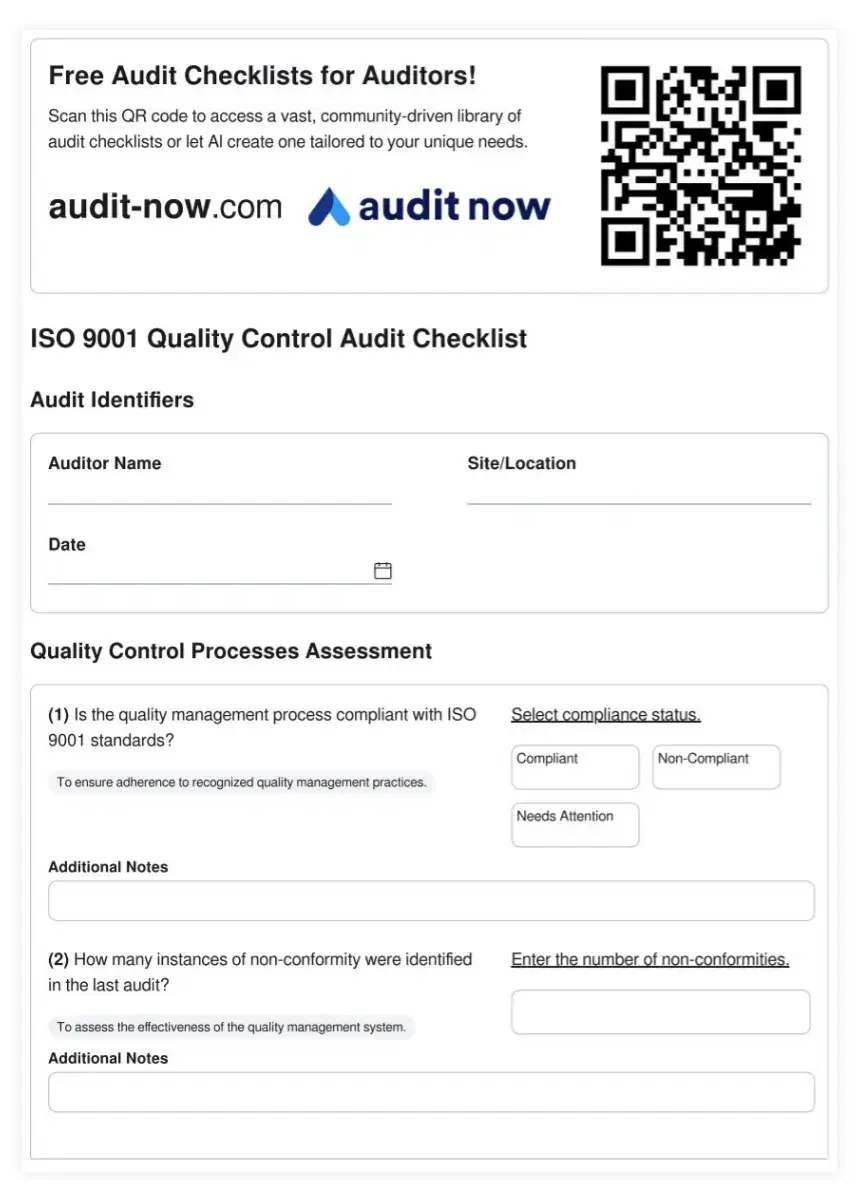HACCP: Safeguarding Food Safety from Farm to Fork

Featured Checklist

Food Safety and HACCP Audit Checklist
A Food Safety and HACCP Audit Checklist is an essential tool for ensuring compliance with food safety regulations and HACCP principles. This comprehensive checklist helps food businesses identify potential hazards, implement critical control points, and maintain high standards of hygiene and safety throughout the food production process. By systematically addressing key areas such as personal hygiene, temperature control, and cross-contamination prevention, this checklist enables auditors to thoroughly assess and improve food safety practices, ultimately protecting consumers and reducing the risk of foodborne illnesses.
Understanding HACCP: A Cornerstone of Food Safety
HACCP, or Hazard Analysis and Critical Control Points, is a systematic approach to food safety that has revolutionized the way we manage risks in food production. This preventive system identifies, evaluates, and controls hazards that are significant for food safety. From small local eateries to large-scale food manufacturing plants, HACCP principles are applied worldwide to ensure that the food we consume is safe and free from contamination.
The Seven Principles of HACCP
At the heart of HACCP are seven fundamental principles that guide its implementation. These principles form a logical sequence of steps to ensure food safety:
- Conduct a hazard analysis
- Determine the Critical Control Points (CCPs)
- Establish critical limits
- Implement monitoring procedures
- Establish corrective actions
- Implement verification procedures
- Establish record-keeping and documentation procedures
By following these principles, food businesses can create a robust system that prevents, eliminates, or reduces food safety hazards to an acceptable level.
Benefits of Implementing HACCP
Implementing HACCP offers numerous advantages for food businesses. It enhances food safety by focusing on prevention rather than end-product testing. This proactive approach not only protects consumers but also safeguards the reputation of food companies. HACCP implementation can lead to improved product quality, reduced waste, and increased operational efficiency. Moreover, it helps businesses comply with regulatory requirements and can open doors to new markets, especially in international trade where HACCP certification is often a prerequisite.
HACCP in Different Food Sectors
While HACCP was initially developed for the space program to ensure food safety for astronauts, it has since been adapted for use across various food sectors. In the meat and poultry industry, HACCP helps control biological, chemical, and physical hazards during processing. For dairy products, it ensures the safety of milk from farm to table. In seafood processing, HACCP addresses unique hazards associated with fish and shellfish. Even in the produce sector, HACCP principles are applied to minimize contamination risks during growing, harvesting, and packaging. The versatility of HACCP makes it an indispensable tool in ensuring food safety across the entire food supply chain.
Core Audit Requirements and Importance of Checklists
Auditing is a crucial component of HACCP implementation, ensuring that the system is functioning effectively and consistently. Core audit requirements for HACCP include verifying the accuracy of the hazard analysis, assessing the effectiveness of CCPs, and evaluating the adequacy of critical limits. Auditors also examine monitoring procedures, corrective actions, and record-keeping practices. HACCP checklists play a vital role in this process, providing a structured approach to auditing. They ensure that all aspects of the HACCP system are thoroughly examined, leaving no stone unturned. Checklists help auditors maintain consistency, reduce the likelihood of overlooking crucial elements, and provide a clear trail of evidence for audit findings. By using comprehensive HACCP audit checklists, businesses can identify areas for improvement, demonstrate compliance, and continuously enhance their food safety management system.
Discover Checklists
Discover ready-made checklists aligning with the requirements of HACCP.
Discover Checklists
Challenges in HACCP Implementation and Auditing
While HACCP is a powerful tool for food safety, its implementation and auditing can present challenges. One common hurdle is the need for extensive training and education to ensure all staff members understand and can apply HACCP principles effectively. Another challenge lies in maintaining the system over time, as food processes and hazards may evolve. During audits, difficulties can arise in verifying the effectiveness of critical control points or in assessing the adequacy of corrective actions. Moreover, small businesses may struggle with the resources required for full HACCP implementation and regular auditing. Overcoming these challenges requires commitment from management, ongoing training, and a culture of continuous improvement.
The Future of HACCP: Emerging Trends and Technologies
As the food industry evolves, so does HACCP. Emerging trends include the integration of HACCP with other food safety management systems and quality standards for a more holistic approach. There's also a growing emphasis on risk-based HACCP, which prioritizes hazards based on their likelihood and severity. Technology is playing an increasingly important role, with digital HACCP systems streamlining record-keeping and monitoring processes. Artificial intelligence and machine learning are being explored for predictive hazard analysis and real-time monitoring of critical control points. These advancements promise to make HACCP implementation and auditing more efficient and effective, further enhancing food safety across the global food supply chain.
In conclusion, HACCP remains a cornerstone of food safety management, continuously adapting to meet the challenges of a complex and evolving food industry. By understanding its principles, recognizing its benefits, and addressing its challenges, food businesses can leverage HACCP to ensure the safety of their products and the well-being of consumers worldwide. As we look to the future, the integration of new technologies and approaches will only serve to strengthen HACCP's role in safeguarding our food supply from farm to fork.
Most Popular 10 HACCP Checklists
Food Safety Audit Checklist for Hospitality
Food Safety and HACCP Audit Checklist
HACCP Compliance Audit Checklist for Hospitality
Hazard Analysis Checklist for Hospitality